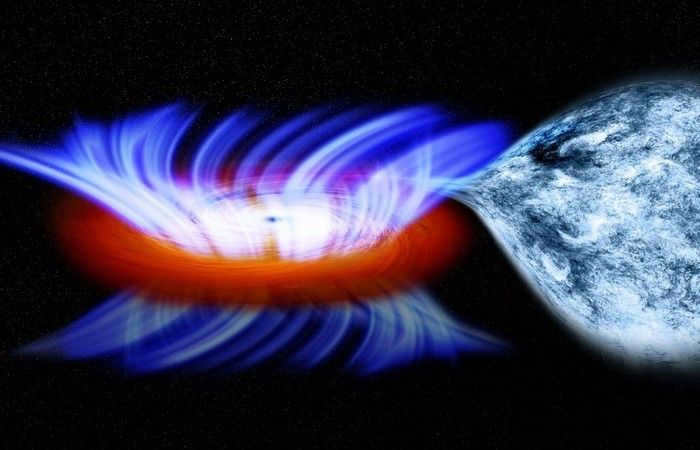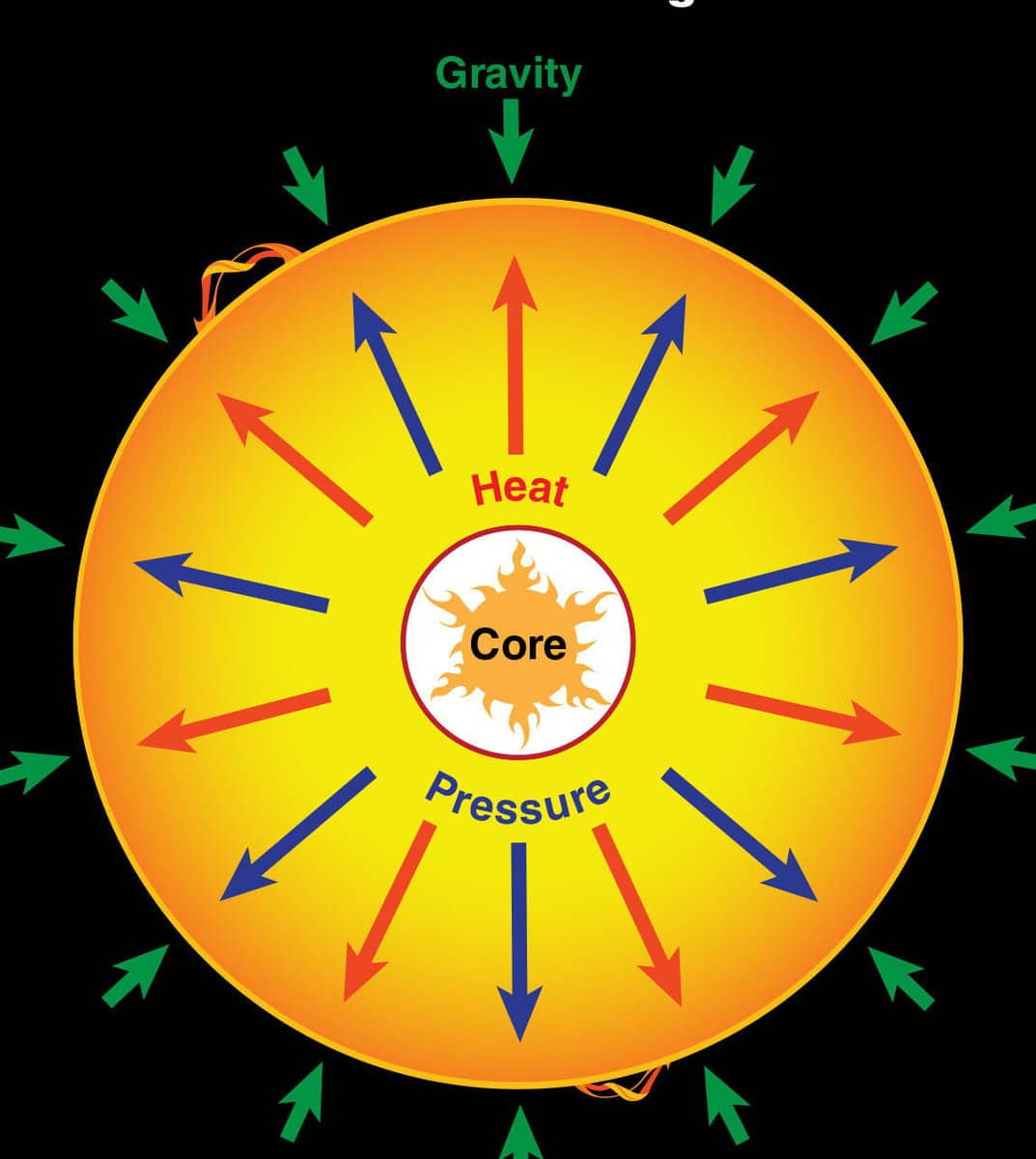A supernova is essentially an explosion of a star and is the most powerful event that can be witnessed in outer space.
Where do supernova remnants appear?
Supernovae are often visible in other galaxies. However, in our own Milky Way, it is a rare occurrence to witness a supernova due to the obstruction caused by dust and gas clouds. The most recent observed supernova in the Milky Way was recorded by Johannes Kepler in 1604. The Chandra telescope has only been able to locate remnants from a star that exploded over a century ago, providing evidence of the aftermath of a supernova explosion.
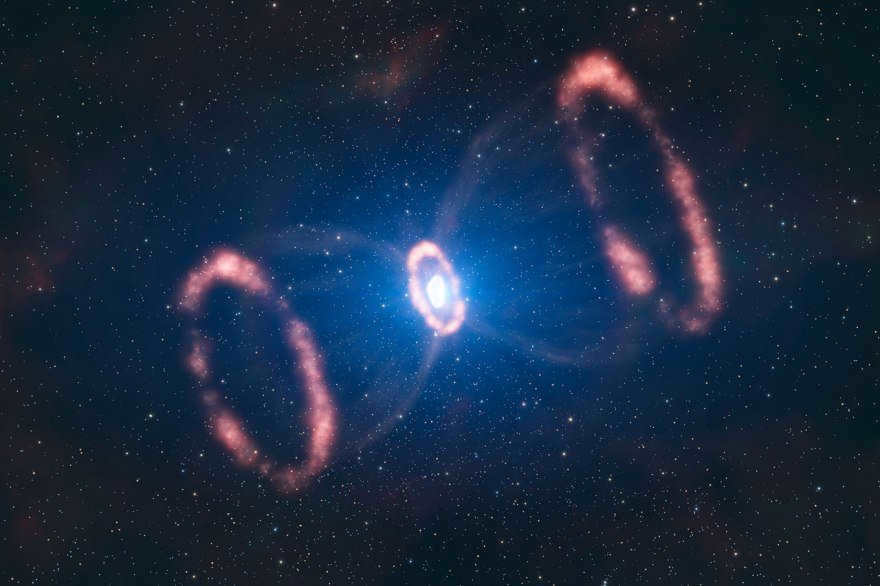

A supernova occurs when a star undergoes a massive explosion, signaling the end of its existence.
What leads to a supernova?
A supernova is triggered by a change within the core of a star. There are two primary types.
The first type occurs in binary systems. Binary stars are celestial objects that orbit around a common center. In these systems, one star siphons matter from its companion, causing it to become incredibly massive. However, the star is unable to maintain equilibrium and eventually explodes in a supernova.
The second occurs when the fuel depletes during the star’s lifetime. Consequently, a portion of the mass commences infiltrating the core, causing it to become exceptionally dense and incapable of withstanding its own gravitational force. This leads to a rapid expansion and eventual explosion of the star. While the sun is a solitary star, it lacks sufficient mass to withstand such a cataclysmic event.
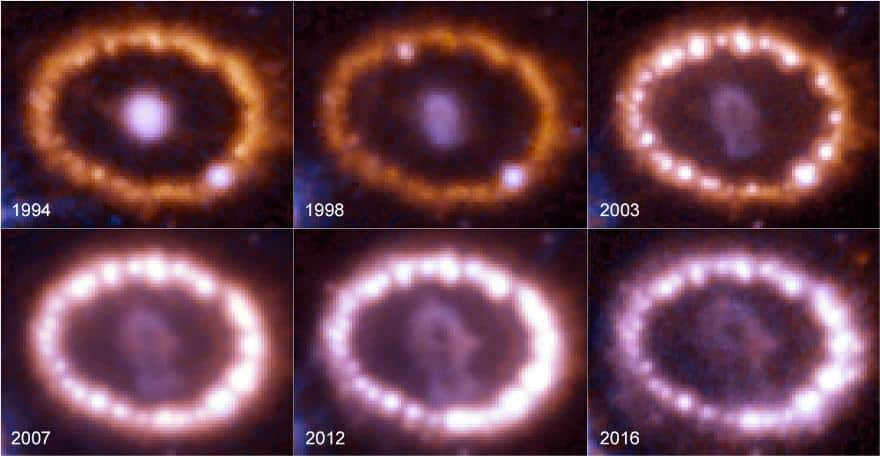
Supernova 1987A after experiencing an explosion (on the left) and prior to the explosion (on the right).
What is the significance of supernovae to researchers?
Although the process itself occurs over a short period of time, it provides valuable insights about the universe. For instance, one particular event confirmed the universe’s expansion and the acceleration of that expansion.
Additionally, researchers have discovered that these cosmic events play a role in the distribution of elements in space. When a star undergoes a supernova, it releases elements and space debris into the surrounding area. Some of these materials even impact our own planet. Watch the following video to learn more about the characteristics of supernova stars and their explosive nature.
What methods are used to detect supernova stars?
Scientists employ a range of instruments to detect supernova stars. One approach involves observing the visible light emitted during the explosion, while other methods focus on detecting X-rays and gamma rays. The Hubble and Chandra telescopes are utilized to capture photographs of these cosmic events.
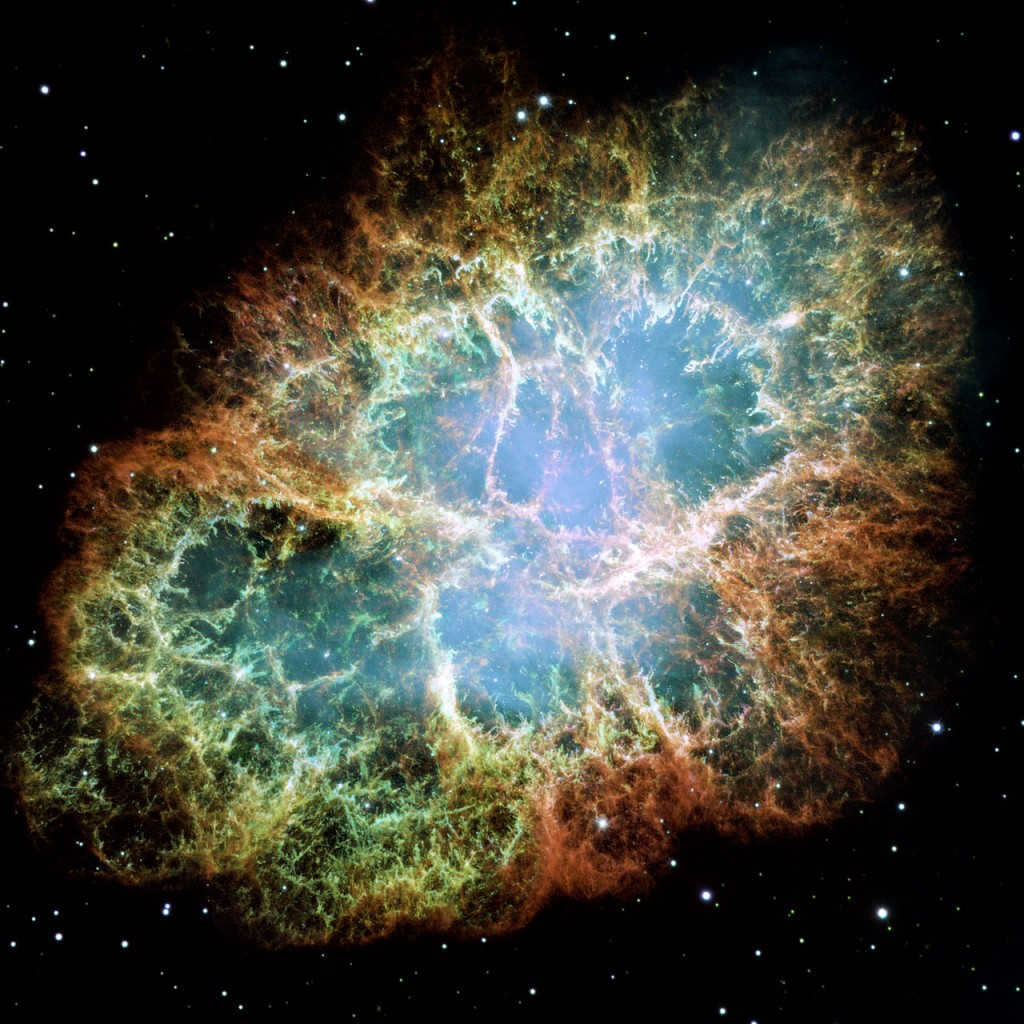

The Crab Nebula is the outcome of a supernova blast.
In June 2012, a telescope that concentrates light in the high-energy range of the electromagnetic spectrum began its operation. We are referring to the NuSTAR mission, which is on the lookout for collapsed stars, black holes, and remnants of supernovas. Scientists aim to gain a deeper understanding of their explosion and formation processes.
You don't have to be a scientist to contribute. In 2008, a normal teenager discovered a supernova. This was repeated in 2011 by a 10-year-old girl from Canada who was browsing a picture of the night sky on her computer. Amateur images often contain numerous fascinating objects. With some practice, you could be the one to find the next supernova! To be more precise, you have a great opportunity to capture the explosion of a supernova star.
Supernovae are fascinating celestial objects that have a significant impact on the chemical evolution of our galaxies. These extraordinary phenomena occur when massive stars, exceeding the mass of our Sun, reach the end of their lives and unleash a brilliant explosion known as a supernova. Throughout history, mankind has witnessed numerous supernova explosions, and one of the most renowned occurrences took place in 1054. Arab and Chinese astronomers diligently documented this remarkable event, which was so luminous that it could even be observed during daylight hours. Consequently, the nights became exceptionally brighter as a result of the supernova’s brilliance. This astronomical spectacle persisted for an impressive duration of 23 days. Remarkably, despite its distant location a staggering 6500 light years away from us, the remnants of this supernova can still be observed today in the form of the awe-inspiring Crab Nebula.
The most recent supernova explosion that could be seen with the naked eye was witnessed by people in 1604. It occurred as a sudden burst of light in the Serpens constellation and was documented by the renowned astronomer Johannes Kepler.
Every day, numerous supernovae occur across the vast expanse of the Universe. However, these extraordinary events can only be observed by astronomers.
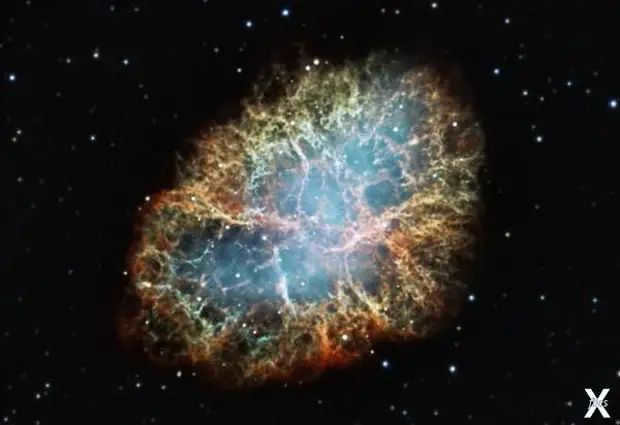
It is fortunate for humanity that supernova explosions occur at great distances from us. If a nearby star were to explode, the intense radiation could result in the extinction of life on our planet. However, all the massive stars capable of undergoing supernovae are located far away from us.
It is intriguing that the demise of a star is referred to as a “supernova,” considering the history of stellar exploration. In the past, when a star suddenly appeared in the sky within “empty” space, it was deemed a new star. This term was coined by the Renaissance astronomer Tycho Brahe, who meticulously documented such occurrences.
When a star unexpectedly begins to shine brightly in the sky, it outshines all others. Hence, it is called a supernova. This extraordinary burst of brightness occurs in a location that was previously devoid of any stellar presence.
Indeed, there was, but it was difficult to detect using the equipment available in the 17th century.
Prior to the explosion, the star existed as a red giant. Following the explosion, it shed its outer layer, depleting most of its mass and disrupting its equilibrium. The expelled shell rapidly disperses into space, while a nebula forms in its place. It is worth noting that in certain cases, white dwarfs undergo similar explosive events, typically in binary star systems.
The remaining core of the star undergoes a process of contraction. Depending on the original star’s mass, this contraction will result in one of two outcomes: the formation of a neutron star or, if the mass exceeds 40 times that of the sun, the creation of a black hole.
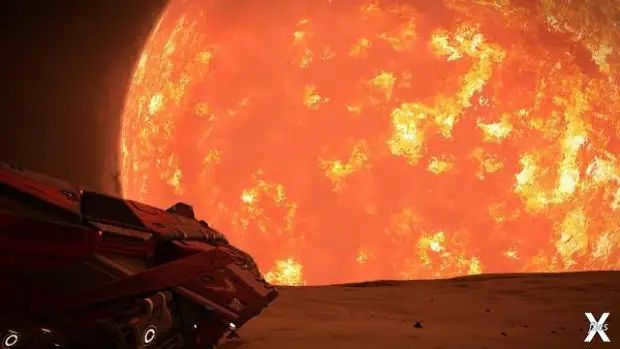
The upcoming explosion in the Milky Way is anticipated to take place in the constellation of Orion. The imminent event involves the detonation of the aging red giant, Betelgeuse, which could happen at any given instant.
The chemical progression of the Universe
Suffice it to say, supernovae hold significant value for us. They play a crucial role in the chemical advancement of galaxies, as they expel matter containing the complete Mendeleev table.

Gold, a valuable metal due to its rarity and beauty, was once created deep within massive stars and dispersed throughout the galaxy.
Supernova explosions serve as the primary source of elements heavier than helium, replenishing the interstellar medium. These explosions occur within the cores of stars as a result of thermonuclear reactions and propel the newly formed elements into space.
Without supernovae, the abundance of essential elements on Earth, ranging from oxygen and carbon to iron and gold, would be significantly lower. While oxygen and carbon are still relatively abundant, the majority of heavy metals originate from remnants of supernova explosions.
Additionally, supernovae play a crucial role in triggering the birth of new stars, thus replenishing the supply of interstellar gas.
There are numerous peculiar occurrences taking place both on Earth and in the vastness of the cosmos. One such instance is the existence of a genuine fleet of unidentified flying objects (UFOs) that are observable through cameras positioned aboard the International Space Station (ISS). This armada gracefully traverses the outer reaches of space, while NASA remains tight-lipped about the nature of these phenomena.
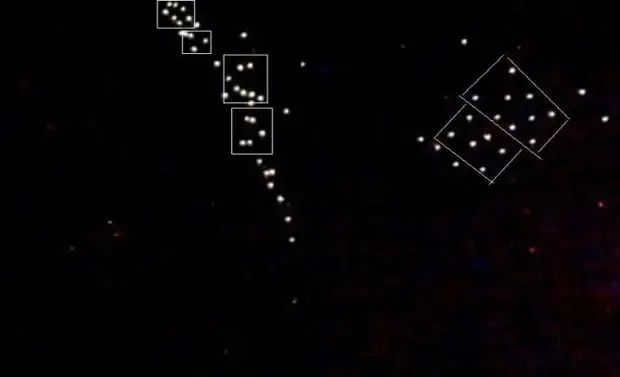
Observe these photographs captured during a live transmission from the ISS, do they bear any resemblance to typical celestial bodies? Take note of the fact that these entities are not moving randomly, but rather in a precise geometric arrangement, a behavior that can only be attributed to guided vessels. The vastness of space… let us acknowledge the presence of these spacecraft.
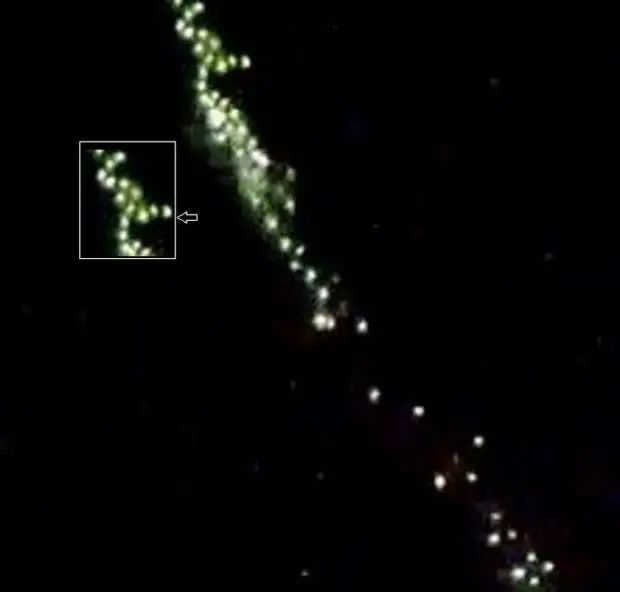
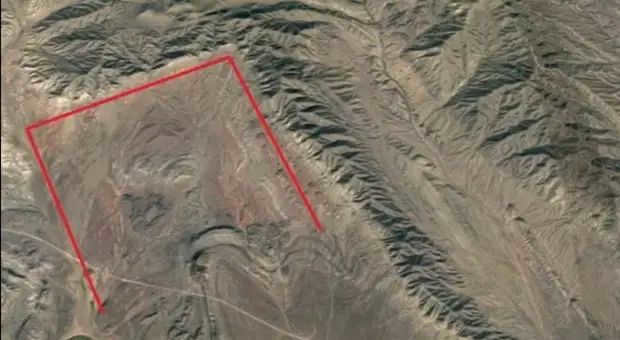
Ancient quarries can be found in various locations around the world. One particularly massive quarry is West Baray in Cambodia, which is actually a large body of water. However, the majority of ancient quarries are associated with ancient Roman civilizations. It is interesting to note that official historical records tend to acknowledge the existence of ancient quarries in areas that were densely populated with numerous cities. Yet, they often overlook the presence of ancient quarries in regions where such highly populated cultures did not thrive.
While browsing through a group dedicated to alternative history, I stumbled upon an intriguing note written by a well-known figure in the field, who is also recognized for their YouTube channel under the moniker Historical Freethinker.
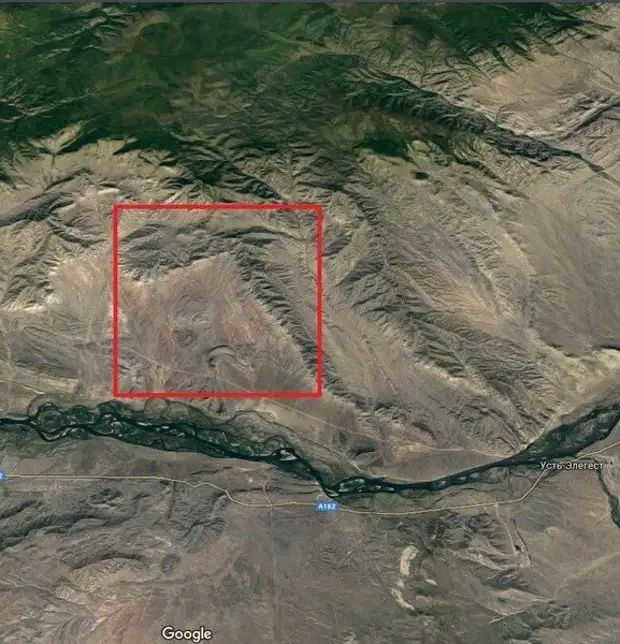
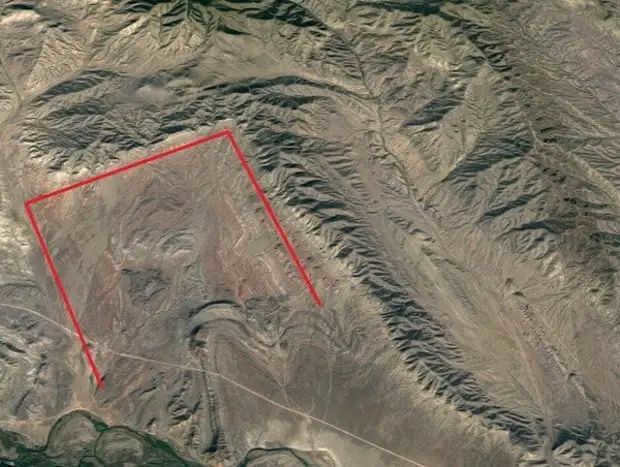
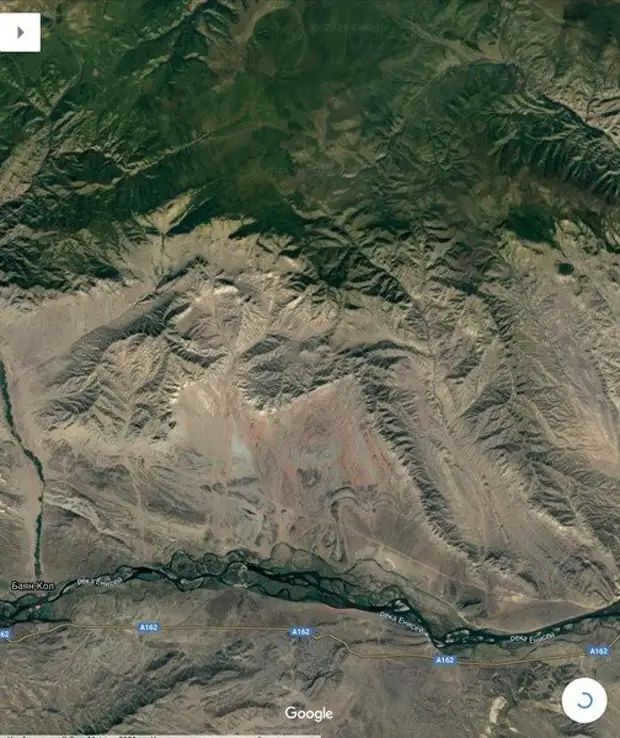
The place is located at coordinates 51.655284, 93.791316 in Tuva, north of the Yenisei river. At first glance, everything seems normal, with a mountain range curving even at a 90-degree angle. It’s just nature playing its usual tricks, nothing out of the ordinary. However, if you look towards the northwest, you will notice another area with a rectangular shape. It appears as though the mountains have been cut or excavated, suggesting that they were of interest to someone in the past. You can easily spot this intriguing location on the map:
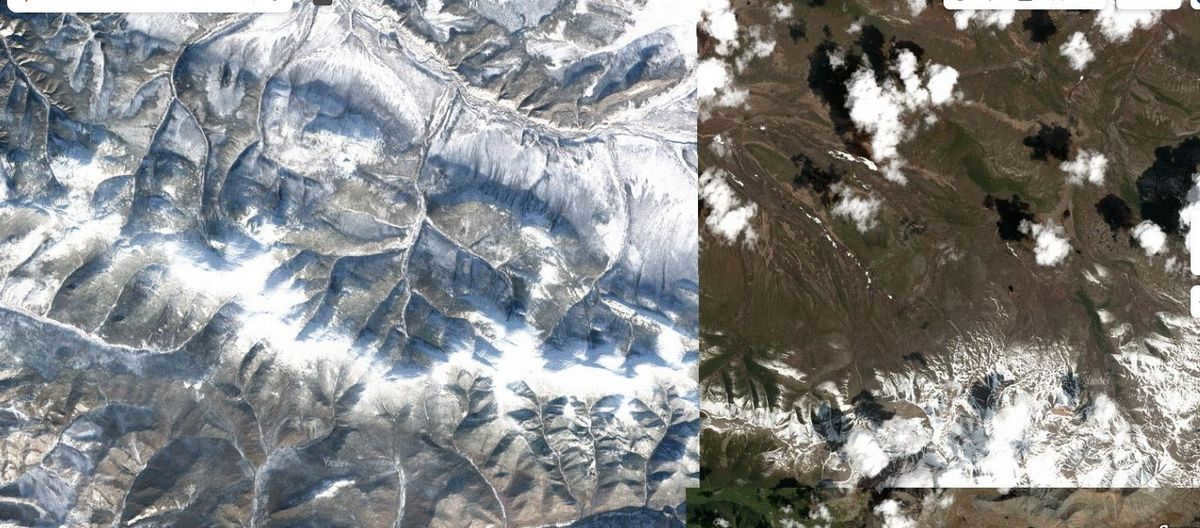
The excavation is 14×12 km in size. The rectangular “appendix” measures 3.3×2.8 km.
I reached out to my friend, geophysicist Nikolay Andreev, who has expertise in remote sensing using SGT DZ space images (https://geometod.ru). He has identified and confirmed the presence of multiple mineral deposits and water sources in this area.
Interestingly, he was already aware of this location and described it as follows:
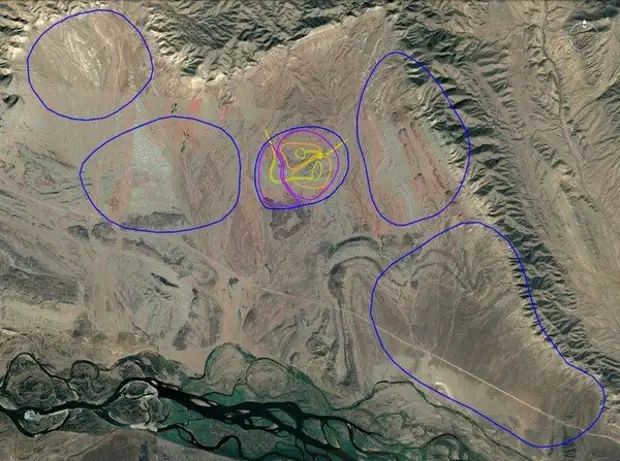
The centers of deep fluid intrusion, which created multiple deposits in this area, are outlined by blue lines. Hydrocarbon deposits are indicated by purple lines. The contours of ore bodies are represented by orange-colored lines. Gold-colored lines depict the contours of eluvial placers and the plumes of primary gold placers. A more detailed depiction is provided for only one deposit here. All other sources contain the same set of elements.
Located within the cleared area (including the “appendix” in the northwest corner) are a cluster of five large sulfide ore deposits. Clearing of this square was undertaken towards the end of the 15th century. However, this ambitious project, which was commonplace for the ancient civilization that perished during the global cataclysm of that time, was left unfinished.
If we refrain from pondering over the magnitude of the excavated rock and accept this information at face value, the question arises: who could have carried out such colossal excavations and inhabited this place? Those well-versed in alternative history may suggest the Tartary civilization as the answer. Nevertheless, the Scythians and their descendants – the Andronov, Afanasiev, Tashtyp, and other cultures – also hold a place in modern history.
There are remnants left by those ancient people. You can witness them at the regional museums located in the southern part of Siberia. Below are my personal observations from the Minusinsk Museum of Local Lore.
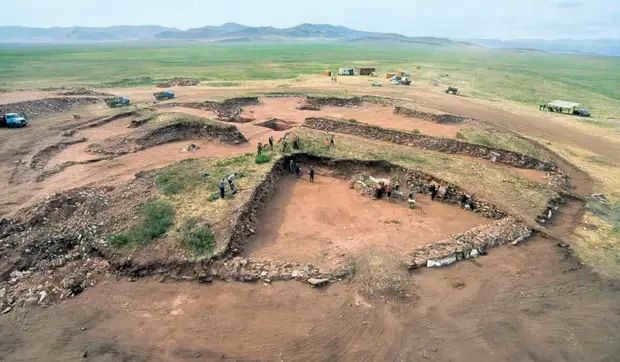
Tuva’s Valley of the Kings is home to numerous burial mounds, some of which have been excavated, looted, or left untouched. Ongoing excavations can still be found in certain areas:
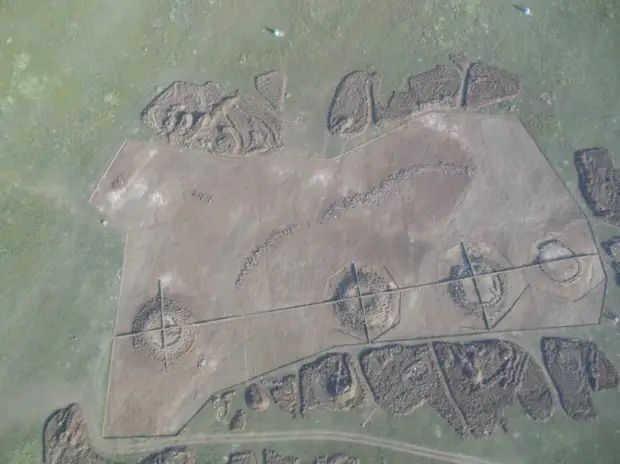
In the 19th and 20th centuries, there were numerous excavations conducted that resulted in the discovery of a vast amount of gold jewelry. Unearthed from various burials, these excavations yielded hundreds of kilograms of gold jewelry. Notably, in the Arjaan-2 burial mound alone, a staggering 20 kilograms of gold jewelry, along with 9,300 gold coins and an abundance of gold beads, were uncovered. Presently, a portion of this remarkable collection can be found on display at the Tyva Museum in Kyzyl, while the remainder is housed in the Hermitage.

Query: how could nomads (based on historians’ theories) be involved in such extensive ore processing and large-scale gold mining? Take a look at their level of craftsmanship, their jewelry, which is on par with modern jewelry. Despite the notion that past cultures and civilizations were technologically primitive, they may have been artisanal, but they were not technologically backward. It wouldn’t surprise me if the Scythians were familiar with a basic device like a pump. Furthermore, mountains can be eroded using a tool known as a hydro-monitor:
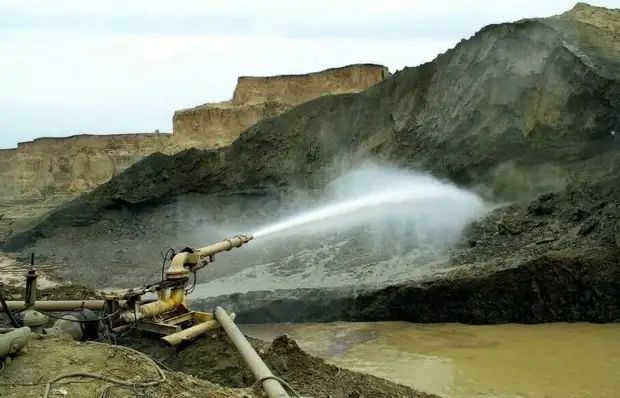
The Yenisei river is in close proximity, it flows vigorously, supplying water to the surrounding mountains. If only the mountains were still in their youth, with some of the rocks not yet eroded and hardened, they could be worn down in massive quantities.
Interestingly, the ancient Romans were aware of this technique. Historical records suggest that they utilized the lake waters found amidst the hilly terrain. This Roman gold mine is famously known as Las Medulas, and it is situated in Spain.
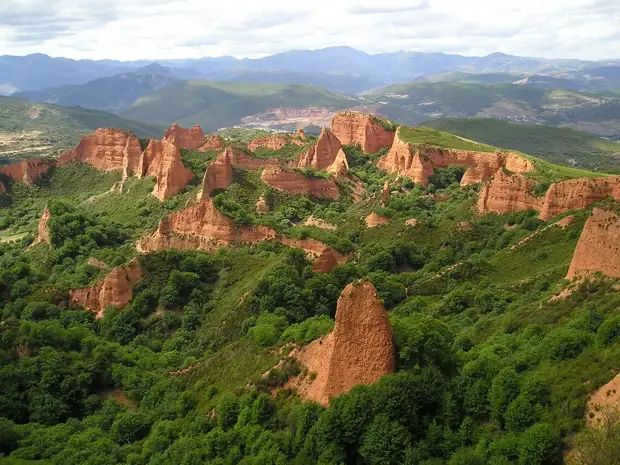
It is comparable in magnitude to the task of the hydro monitors.
The inference can be drawn that the Scythians were most likely not wanderers. Or not solely wanderers. They were the inhabitants of one of the provinces of Tartary. And based on the quantity of discovered bronze artifacts (axes) – they were skilled metallurgists, not just jewelers.

New bandits
The unexpected and sensational reappearance of Donald Trump in the public eye after a year-long hiatus can be considered quite timely. It is not just about the presidential election, which is still three years away, but also about the current agenda that includes other important events.
One such event is the upcoming congressional elections. While it is unlikely that the former president will be directly involved, Trump’s presence can serve as a catalyst for attention towards other Republican candidates. This is particularly crucial considering the party’s current shortage of qualified personnel, which will be discussed further.
Joseph Biden has already made it clear that his chances of winning a second term are uncertain, but the current leader of the Democratic Party has not yet named K. Harris as a potential candidate from their party. It is possible that he is simply waiting for the right moment.
It is evident that Biden himself is starting to feel self-conscious about his age. While Trump is only three and a half years younger, he still possesses more energy and charisma, making him a formidable opponent to the 46th president. Additionally, Trump does not carry the burden of the immense losses caused by the COVID-19 pandemic, nor does he have to deal with the economic aftermath of anti-COVID measures.
Many find it entertaining that “playboy Donald” will be serving a second term at the same age as Joe Biden when he resigned from his first term. The difference is that Donald Trump will not doze off intermittently while in office.
Donald Trump, as well as the Republican Party following him, have decided not to delay in utilizing the fact that a majority of Americans currently recognize that things have not improved with the arrival of Biden, and more importantly, the Democrats. Nor has the situation significantly worsened, even though Trump was able to make a quick start by promising improvement.
It’s unprecedented in American history, but now several analysts are suggesting that it’s time for the Democrats to bring former President Obama – old Barack – back into the spotlight. And not necessarily as a direct counter to Trump. While the next presidential election is still far off, the possibility of a showdown between these two “exes” – old adversaries – cannot be dismissed.

However, this is not a new development – in the United States, there is serious discussion about the possibility of the resurgence of the “bat Hillary” – Mrs. Clinton, who previously served as Secretary of State under B. Obama, and is certainly not the former wife of former President Bill Clinton. It would be quite remarkable if the 2024 election were to suddenly become a replay of the 2016 election.
After ousting Trump from the presidency after just one term, which is an uncommon occurrence in the United States, the Democrats appear to be reverting back to the path set by Barack Obama. This is especially true considering Joe Biden served as his loyal and successful vice president. However, this is not necessarily a requirement.
There have already been subtle indications that the best aspects of Trump should not be discarded, all under the convenient slogan of “we don’t have bad presidents.” The Trump administration faced criticism for hastily undoing the Democrats’ legacy, particularly that of Barack Obama.
While Joe Biden may not be able to repair everything that Trump damaged, it would be beneficial to recognize the similarities and differences between the courses taken by the two previous presidents before the current leader of the White House.
Let’s begin by acknowledging that fundamentally strategic differences in the programs of United States presidents, regardless of their party affiliation, are nonexistent.
However, the two parties and the media accentuate these differences. It is crucial for America to be consistently reminded that the two-party system is not mere symbolism, but rather a compelling demonstration of commitment to democratic values.
Therefore, the pro-democratic media frequently highlights the essence of “true Obamaism.”
This includes Obama’s focus on social reforms in healthcare and resolving the aftermath of the American mortgage crisis, as well as his ability to navigate international affairs, including the infamous nuclear agreement.
And in exchange, it’s all about Donald Trump’s wager on the resilient farmer and the typical rural businessperson. Economics also underscores that the Democrats and Obama have consistently had faith in the mighty dollar, just as Gaidar did in the firm grip of the market.
There is room for debate on how successful Obama’s efforts were in restoring order to the financial landscape after the 2008 crisis, but the financiers themselves were undoubtedly content with it. Evidence of this can be seen in the bankers’ pivot to support Biden even before the 2020 elections.

In spite of all the advantages and privileges offered by Trump in exchange for complete support of the real sector.
Naturally, a non-establishment Republican like Trump would not be permitted to replicate many of Obama’s tactics, such as the memorable “money drop from a helicopter.”
Let me remind you that this was the so-called “Operation Wall Street,” carried out by the Federal Reserve, in which trillions of dollars were pumped into the US economy through extremely low interest rates. And instead of punishing the bankers and speculators, millions of ordinary people with mortgages had to pay with their hard-earned money.
Following that, Trump had to rely on the backing of the majority, placing his bets on strict protectionism and disregarding America’s role as a leader in globalization. On international battlegrounds, he engaged in trade wars, and on domestic battlegrounds, he refused to allocate funds to programs that would benefit those who were unwilling to contribute, either materially or morally.
Are the Republicans prepared?
It has been frequently observed that Trumpism is already experiencing a resurgence, although its key points have yet to be seriously articulated.
The desire to resurrect “Obamaism” has been widely proclaimed, and Barack Obama himself has already made public appearances – often seen alongside Joe Biden, almost in sync with Trump’s rallies.
Who the Republican Party is rallying behind remains uncertain in America itself. We won’t delve into the specifics of individuals, although it’s worth mentioning former Vice President Mike Pence (Trump’s most recent case) or the outspoken Senator Ted Cruz, known for his regular voting mishaps.
The leaders of Florida, Governor Ron Desantis and Senators Marco Rubio and Rick Scott, are relatively unknown outside of their state. However, they pale in comparison to the flamboyant Trump when it comes to their interest in domestic affairs. It appears that Trump, in his first public speech, deliberately mentioned the infamous “hand of Moscow”.
Interestingly, the Russian media did not provide much support for him. This is not surprising given the American media’s previous criticism of Trump and his associates in the Republican Party. Instead, the Russian media left this topic for bloggers and social media activists.
No, occurrences such as “the Democratic administration being hindered in its efforts to remove debris” occur frequently. However, the most powerful criticisms will be reserved for the upcoming November elections. During this time, all 435 members of the House of Representatives and 34 out of 100 Senators will be up for re-election.
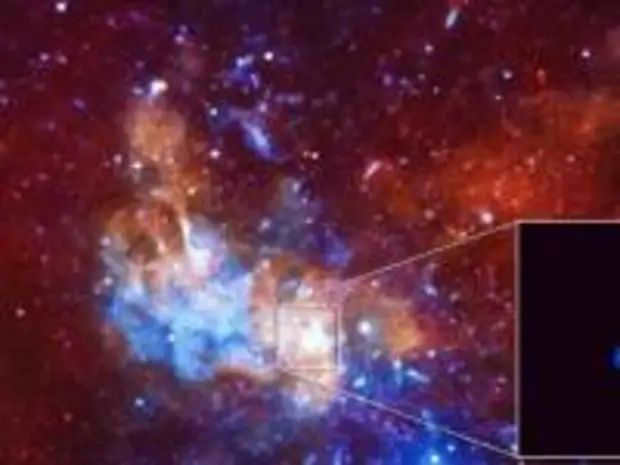
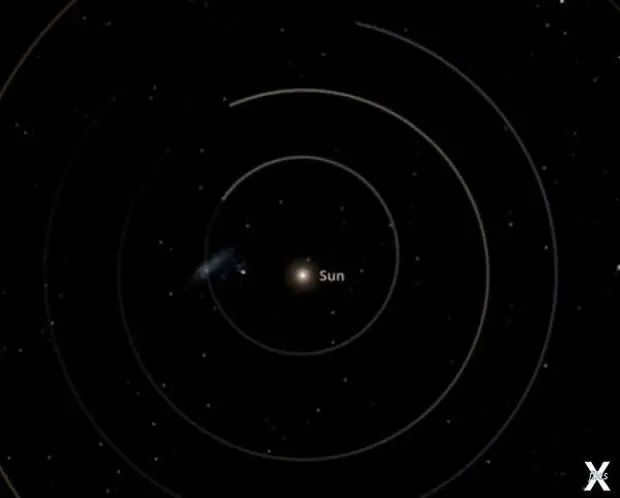
Assuming that Sagittarius A were to vanish from the core of our galaxy, it can be deduced that the Milky Way would face complete annihilation, causing its stars to disperse in all directions. However, there exists a notable distinction between our galaxy and the solar system: despite the black hole’s considerable mass, it is insignificantly small when compared to the total mass of the entire galaxy (less than 1%).
Consequently, the supermassive black hole situated at the nucleus of our galaxy does not serve as the primary source of gravitational force within it, and the stars do not orbit around Sagittarius A. Hence, the disappearance of this supermassive black hole from the core of the Milky Way would not exert a substantial influence on the galaxy. So, what then keeps the galaxy bound together?
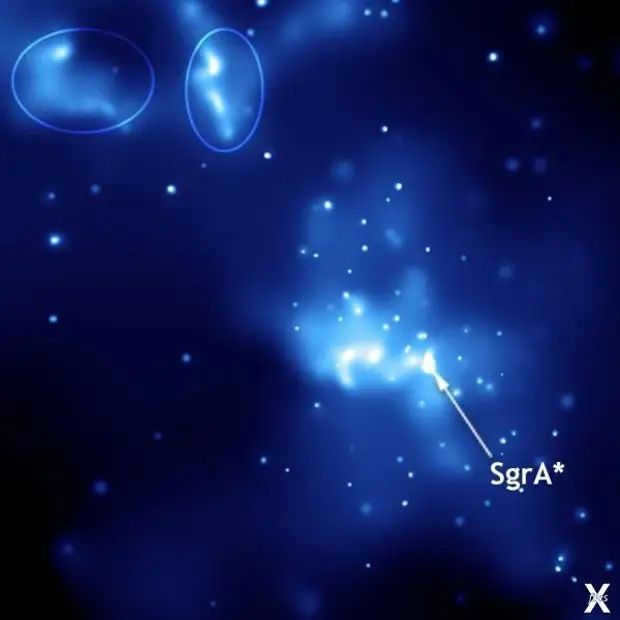
The reason why dying stars are referred to as supernovae is because of the galaxy in which they reside. Specifically, it is the cumulative gravitational force of all the stars and dark matter within the galaxy that keeps the stars within its grasp. In fact, this combined gravitational force is significantly more powerful than that of a single supermassive black hole.
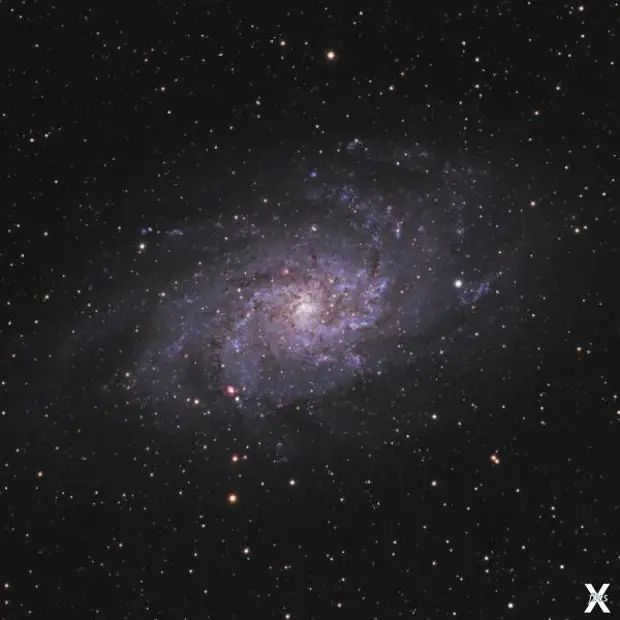
Thus, a more pertinent and captivating query would be: what will occur to the galaxy upon the vanishing of dark matter, however, providing an answer to such an inquiry is challenging because we still lack a precise understanding of its self-interaction and interaction with ordinary matter, or at the very least, a comprehensive map of the distribution of dark matter within the Milky Way.
This is presently the most recent footage released by research director Jeremy Corbell.
The extraordinary footage was captured in July 2019, when over a hundred enigmatic objects surrounded US Navy ships. Approximately 14 unidentified flying objects (UFOs) were documented at that time.
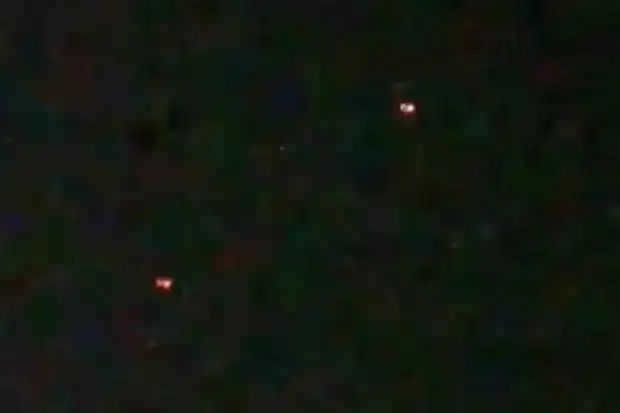
The footage was captured in July 2019 when over 100 unknown entities encircled multiple U.S. Navy warships.
Each unidentified aerial phenomenon emits a crimson light and is composed of two interconnected shapes.
Jeremy Corbell shared on Twitter that the video was filmed from the USS Omaha’s deck by the VIPER crew.
A minimum of 14 objects were documented that evening, and they displayed no apparent concern for the warships’ presence. Many witnesses to the incident believe that the UFOs intentionally showcased their existence.
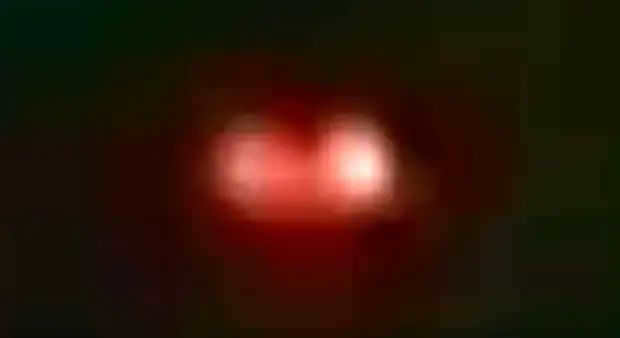

The U.S. Department of Defense has come to the conclusion that these flying objects cannot be operated by humans. This indicates that, at the very least, the U.S. or its allies do not possess such advanced technology.
According to Corbell, these unidentified flying objects had a minimum diameter of 6 feet and emitted a red light.
Prior to this, the filmmaker shared video footage of a UFO submerging into the ocean near the American destroyer Omaha, as well as radar recordings capturing multiple objects surrounding the vessel.
Creating a simulation of the birth of a supernova is a complex task. Until recently, all attempts at experiments have been unsuccessful. However, astrophysicists have successfully managed to simulate the explosion of a star. It was on November 11, 1572, that astronomer Tycho Brahe first observed a new star shining brightly in the constellation of Cassiopeia, comparable to the brightness of Jupiter. This discovery shattered the belief in the eternal and unchanging nature of the heavens, paving the way for modern astronomy. Centuries later, astronomers came to understand that certain stars undergo sudden and violent explosions, becoming billions of times brighter than usual. In 1934, Fritz Zwicky of the California Institute of Technology coined the term “supernovae” to describe these phenomena. Supernovae play a crucial role in the distribution of heavy elements in outer space, which in turn influence the formation and evolution of galaxies. They also provide valuable insights into the expansion of the universe.
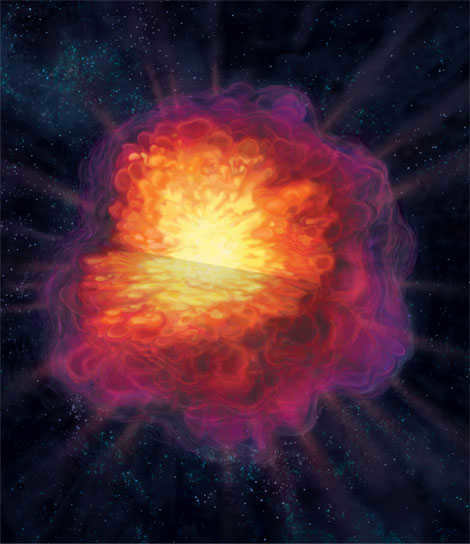
Ten seconds after the flash, the thermonuclear fire consumes the white dwarf, leaving little behind. The flames rapidly expand from the core, triggering a nuclear chain reaction that converts carbon and oxygen (depicted in lilac and red) into silicon (represented in orange) and iron (depicted in yellow). Previous computer models failed to accurately depict the turbulent movements and the reasons behind stellar explosions.
Zwicky and his colleague Walter Baade proposed the idea that the explosion of a star is fueled by its own gravitational energy. According to their theory, the star collapses until its core reaches the density of an atomic nucleus. This collapse releases enough gravitational potential energy to propel the remnants of the star outward. In 1960, Fred Hoyle from Cambridge University and Willy Fowler from Caltech compared supernovae to giant nuclear bombs. When a star, like the Sun, exhausts its hydrogen and helium fuel, it undergoes nuclear fusion to create oxygen and carbon. This fusion process not only releases a tremendous amount of energy, but also produces radioactive nickel-56. The decay of nickel-56 is responsible for the lingering glow of the explosion, which can last for months.
Both hypotheses were proven to be accurate. In certain supernovae, hydrogen is completely absent in their spectra (Type I); it seems that most of them experience a thermonuclear explosion (Type Ia), while the remaining ones (Types Ib and Ic) undergo a collapse, shedding their outer hydrogen layer. Supernovae that exhibit hydrogen in their spectra (Type II) also occur as a result of collapse. The first two events transform the star into a detonating gas cloud, while gravitational collapse leads to the creation of an extremely dense neutron star or even a black hole. Observations of supernova 1987A (Type II) provide evidence in support of the proposed theory.
INTRODUCTION: SUPERNOVAE
Supernovae are a fascinating cosmic phenomenon that occurs when white dwarfs, which are the remnants of sun-like stars, undergo a dramatic explosion. This explosion can be triggered by the white dwarf accreting matter from a companion star, leading to an increase in its mass, central density, and temperature.
The process of thermonuclear reactions within the white dwarf is similar to ordinary fire, where a combustion front spreads through the star. This leaves behind “nuclear ash,” primarily composed of nickel. However, these fusion reactions occur in a confined space, mainly within a thin layer on the surface of bubbles filled with the ash, which may eventually rise to the surface of the white dwarf due to their low density.
However, the thermonuclear fire will extinguish when the star expands and cools due to the energy release. In contrast to a bomb, a star lacks a protective shell to restrict its size.
Recreating a supernova explosion in the laboratory is an unattainable feat; it can only be observed in the vastness of space. Our research team undertook an extensive modeling endeavor utilizing the computational power of an IBM p690 supercomputer. The star’s numerical representation was constructed within a three-dimensional computational grid consisting of 1024 elements on each side, enabling us to incorporate intricate details down to a few kilometers in size. Each computational grid necessitated more than 1020 arithmetic operations. Even with a supercomputer capable of executing over 1011 operations per second, the entire process consumed nearly 60 processor-years to accomplish. The utilization of various computational techniques, commonly employed in other scientific domains, proves ineffective when dealing with the asymmetrical flows, extreme conditions, and colossal spatial and temperature ranges inherent to supernovae. Furthermore, supernova models must encompass particle physics, nuclear physics, hydrodynamics, and the theory of relativity.
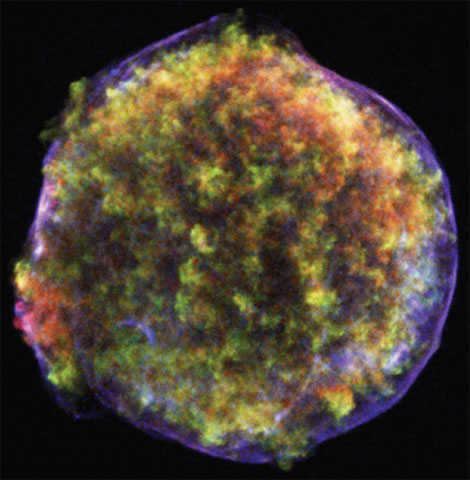

The Tycho supernova, which occurred in 1572 and was observed by the famous Danish astronomer Tycho Brahe, resulted in a thermonuclear explosion that has created luminous clouds of silicon, iron, and other heavy elements in the X-ray spectrum (green, red). The shock wave, represented by the thin blue shell, is expanding at a velocity of 7,500 kilometers per second.
One variety of Type Ia supernovae, which occurs when a star undergoes a sudden nuclear explosion
1 The larger of the two stars similar to our Sun, after depleting its fuel, transforms into a white dwarf
2 The white dwarf collects the gas emitted by its companion star and gets close to reaching its critical mass.
3 A “flame” of uncontrollable nuclear reactions ignites in the turbulent core of the dwarf.
4 The flame rapidly spreads outwards, converting carbon and oxygen into nickel.
5 In a matter of seconds, the white dwarf is completely obliterated. Then, for several additional weeks, the radioactive nickel decays, causing the remnants of the star to emit light.
A new development in the field of supernova modeling has provided an opportunity to investigate turbulence. In this illustration, we present the events that occur 0.6 seconds after ignition. The nuclear combustion front exhibits a turbulent and bubble-like formation, represented by the blue color. This turbulence is responsible for the swift progression of the front and the inhibition of the star’s stabilizing mechanisms.
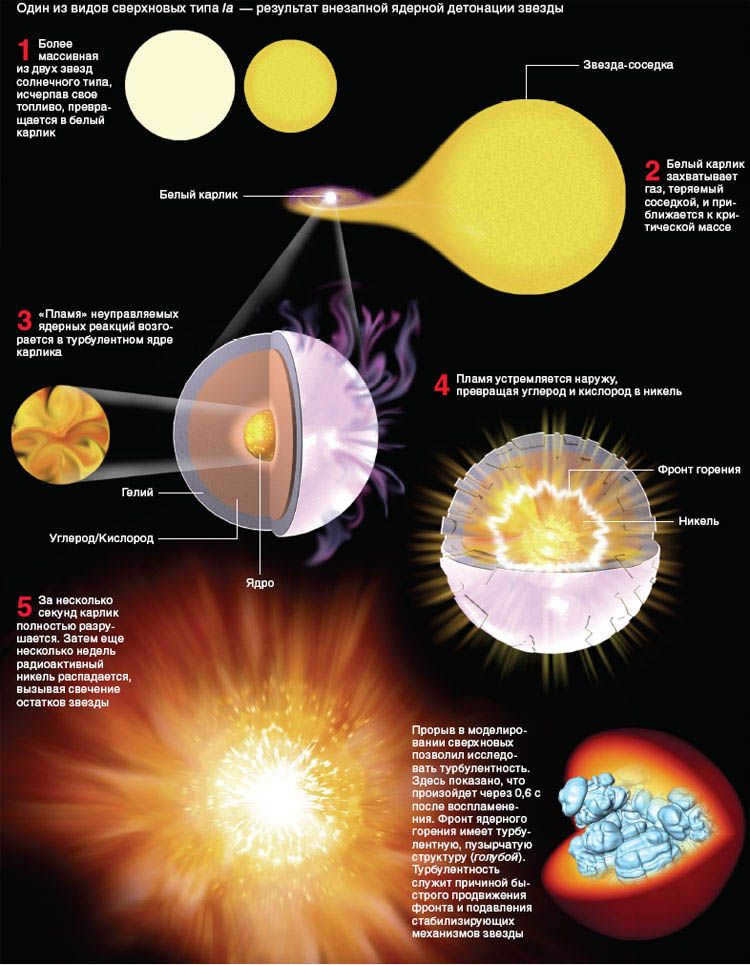
The solution was discovered through an analysis of the functioning of a car engine. The combination of gasoline and oxygen, followed by ignition, creates turbulence that leads to the deformation of the combustion surface. This turbulence also increases the rate of fuel combustion, as it is directly proportional to the combustion area. Similarly, stars experience turbulence. Gas streams within stars travel vast distances at high speeds, and even the slightest disturbances can quickly transform a calm flow into a turbulent one. In the case of a supernova, the formation of hot bubbles causes the matter to become agitated, allowing for the rapid spread of nuclear combustion. This prevents the star from being able to rebuild and extinguish the flame in time.
Over the past few years, scientists have made significant advancements in developing reliable models for thermonuclear deflagration. Researchers from the University of California (Santa Cruz) and the University of Chicago, along with our team, have utilized specialized programs originally designed for studying chemical combustion and weather forecasting. Due to the complex nature of the phenomenon, our modeling efforts have been focused on creating three-dimensional representations.
The supernova model displays a distinct mushroom-like shape, with hot bubbles rising within a layered medium that is characterized by turbulence-induced wrinkles and stretches. The acceleration of nuclear reactions, driven by this turbulence, ultimately leads to the rapid destruction of the white dwarf in a matter of seconds. The remnants of the explosion then disperse at a velocity of approximately 10,000 km/s, aligning with the observed pattern.
However, the source of ignition for the white dwarf remains uncertain. Furthermore, deflagration would result in the ejection of most of the dwarf’s material without any alteration, yet observations indicate that only a small portion of the star remains unaltered. It is likely that the supernova explosion is triggered not only by rapid combustion, but also by detonation. Therefore, the cause of Type Ia supernovae explosions can be attributed not solely to the accretion of matter, but also to the merging of two white dwarfs.
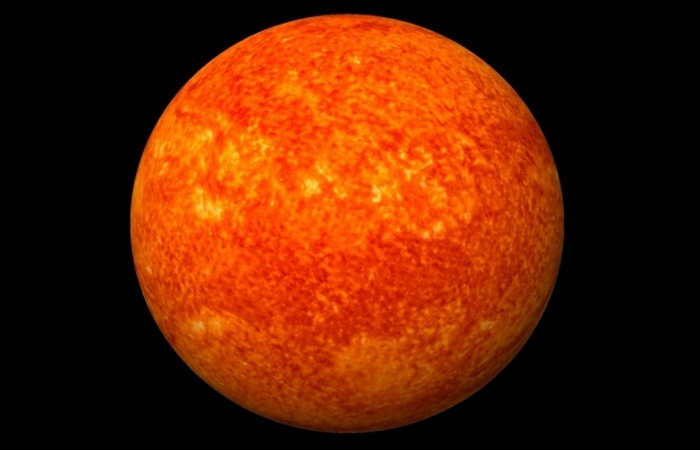

The Crab Nebula is the gas remnant of a core-collapse supernova whose explosion was observed in 1054. At the center is a neutron star (indicated by the arrow) ejecting particles that make the gas glow (blue). The outer fibers are mostly hydrogen and helium from the collapsed massive star
Gravitational grave
Explaining the occurrence of supernovae resulting from the collapsing of a stellar core is a more challenging task. From an observational standpoint, these supernovae exhibit more diversity compared to thermonuclear supernovae: some contain hydrogen while others do not, some explode in a dense interstellar medium while others in near-empty space, and some release significant amounts of radioactive nickel while others do not. The energy of ejection and rate of expansion also vary. The most powerful of these supernovae not only result in a classical explosion but also in an extended gamma-ray burst (refer to: Gehrels N., Leonard P., and Piro L. Brightest explosions in the Universe // VMN, No. 4, 2003). This range of characteristics is just one of the many mysteries surrounding them. Core-collapse supernovae are considered to be the main contributors to the formation of heavy elements like gold, lead, thorium, and uranium, which can only form under specific conditions. However, it remains unknown whether these conditions actually occur within a star when its core undergoes a catastrophic explosion.
While the concept of collapse may appear straightforward (the compression of the core results in the release of gravitational binding energy, causing the expulsion of the outer layers of matter), comprehending the intricacies of the process proves challenging. Toward the end of its lifespan, a star exceeding 10 solar masses develops a stratified structure: progressively heavier elements form layers at greater depths. The core primarily consists of iron, and the star’s equilibrium is upheld by the quantum repulsion of electrons. However, the star’s mass eventually overwhelms the electrons, forcing them into atomic nuclei, where they initiate reactions with protons to create neutrons and electron neutrinos. Consequently, the neutrons and remaining protons exert increasing pressure against each other until their own repulsive force halts the collapse.
In 1966, Stirling Colgate and Richard White published a paper attempting to solve the problem. Later, in the early 1980s, Jim Wilson created computer models while all three were working at Lawrence Livermore National Laboratory. Their hypothesis was that the shock wave is not the only way energy is transferred from the core to the outer layers of the star. They suggested that neutrinos, which are extremely inactive and interact weakly with other particles, could play a role. Despite their weak interaction, neutrinos born during the collapse of a star have enough energy to cause an explosion and interact well with matter at high densities. The neutrinos heat the layer surrounding the collapsing supernova core, maintaining pressure in the shock wave.
CORE COLLAPSE SUPERNOVA
A different type of supernova occurs when stars with masses greater than 8 solar masses undergo compression. These supernovae are classified as type Ib, Ic, or II, depending on the observed characteristics.
1 At the end of its life, a massive star has a layered structure.
2 Nuclear fusion does not involve iron, so no heat is generated in the core. As a result, gas pressure decreases and the surrounding matter rapidly collapses.
3 Within a second, the core undergoes a sudden contraction and transforms into a neutron star. The infalling matter rebounds off the neutron star, generating a shock wave.
4 Neutrinos are emitted from the newly formed neutron star, unevenly propelling the shock wave outwards.
5 The shock wave propagates through the star, causing it to disintegrate.
Modern simulations are capable of accurately tracking the turbulent movements of the explosion. This visualization depicts the inner workings of a star approximately 5.5 hours following the onset of the explosion. Enormous upward-moving bubbles provide crucial support to the shockwave, extending up to a staggering distance of 300 million kilometers. Surprisingly, neutrinos, which are known for their minimal interactions, are rapidly propelling outward in such vast quantities and with such high levels of energy that they begin to exert a significant influence on the overall dynamics. As a result of the intense turbulence, various elements, including carbon, oxygen, silicon, and iron, from the deep layers (indicated in shades of blue and turquoise) become mixed with helium (green) and hydrogen (red), which reside above.
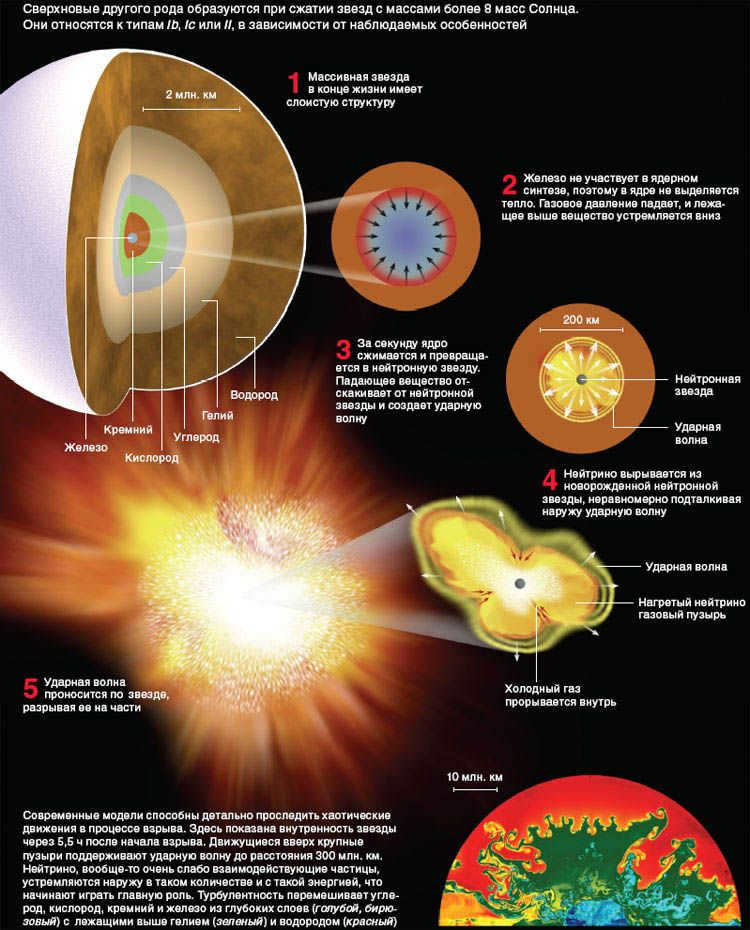
However, is this additional force sufficient to sustain the shock wave and complete the explosion? Computer simulations have demonstrated that it is insufficient. Despite the fact that the gas both absorbs and emits neutrinos, the losses outweigh the gains, resulting in a failure to ignite the explosion. Nevertheless, there was one simplification in the models that were examined: they assumed that the star was spherically symmetric. Consequently, they neglected multidimensional phenomena like convection and rotation, which are crucial as the observed supernovae produce a highly irregular, “chunky” remnant.
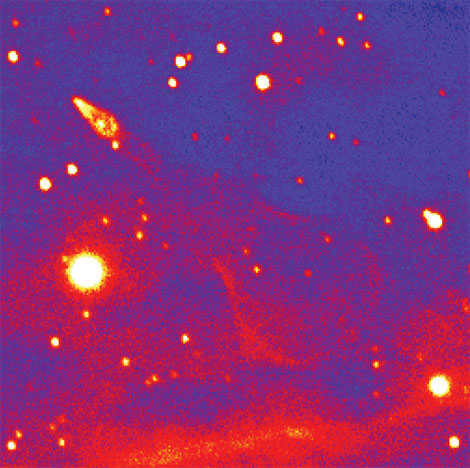

The Guitar Nebula is formed by a shock wave that is spreading out behind a neutron star (pointed to by the arrow). This shock wave is carrying the neutron star through the surrounding gas at a velocity of 1600 km/s. To give the star such a high speed, the explosion that formed the nebula must have occurred in an asymmetric manner.
According to multidimensional modeling, the supernova core is heated by neutrinos, which in turn create bubbles and mushroom-shaped flows in the surrounding plasma. Convection then transfers energy to the shock waves, propelling them upwards and triggering the explosion.
As the remaining fragments of the star typically disperse in one direction, the neutron star situated at the core rebounds in the opposite direction, similar to a skateboard bouncing in reverse when an individual leaps off it. Our computer simulation indicates a rebound velocity exceeding 1000 km/s, aligning with the documented movement of numerous neutron stars. However, certain neutron stars exhibit slower motion, likely due to the inadequate time for the bubbles to merge during the explosive event that gave rise to them. A comprehensive overview reveals that the varied outcomes stem from a solitary fundamental influence.
Although numerous advancements have been made in recent times, none of the current models are able to replicate the entire spectrum of phenomena linked to a supernova explosion and thus entail certain simplifications. An all-encompassing version should incorporate seven dimensions: space (represented by three coordinates), time, neutrino energy, and neutrino velocity delineated by two angular coordinates. Furthermore, this task must be accomplished for all three variations, or flavors, of neutrinos.
However, is it possible that the explosion could be initiated by alternate mechanisms? In fact, the magnetic field has the potential to intercept the rotational energy of a freshly formed neutron star and provide a fresh momentum to the shock wave. Furthermore, it would compress the matter outwards along the axis of rotation in the shape of two polar jets. These phenomena would assist in elucidating the origins of the most potent explosions. Specifically, gamma-ray bursts could be linked to jets that travel at speeds close to that of light. It is conceivable that the cores of such supernovae collapse into black holes rather than neutron stars.
While scientists are enhancing their theories, researchers are attempting to utilize not just electromagnetic radiation but also neutrinos and gravitational waves. The implosion of a star’s core, its collapse at the onset of the explosion, and its eventual metamorphosis into a black hole not only leads to the ejection of powerful neutrinos, but also disrupts the fabric of space-time. Unlike light, which is unable to penetrate the layers above, these signals originate directly from the seething inferno at the heart of the explosion. Recently developed detectors for neutrinos and gravitational waves have the potential to unveil the enigma surrounding the demise of stars.
Many people have been curious about the reason behind the rapid movement of neutron stars throughout the Milky Way. Recent studies on core-collapse supernovae provide an explanation that revolves around the inherent imbalance of these explosions.
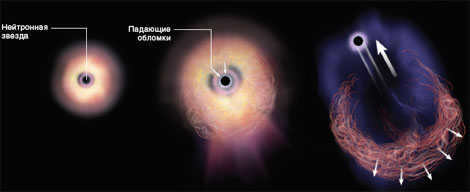
| The newly formed neutron star at the epicenter of the impending explosion is almost calm | The gravitational force of the uneven ejection pulls the neutron star in a particular direction, while the matter falling onto the star provides an additional impetus | These forces propel the neutron star forward. (Following the law of momentum conservation, the neutron star moves away in the direction from which the matter falls onto it) |
Simulation reveals that asymmetry arises early in the detonation. Small variations during the initial collapse of the star result in significant differences in the level of asymmetry
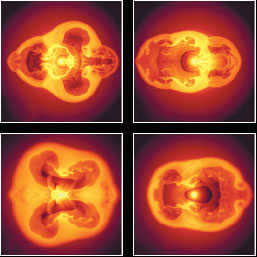

Consequently, these variations are evident in the diverse velocities of neutron stars. Testing the models can be done by comparing the projected velocities and the actual observations.
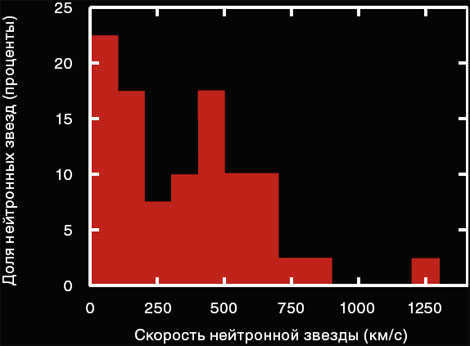

ADDITIONAL READING
No comments. Only registered users can leave comments. Please log in or register.
Get one of the most popular articles delivered to your inbox daily. Connect with us on Facebook and VKontakte.

For centuries, humans have been fascinated by the allure of the stars. While modern scientists have gained a deep understanding of celestial bodies and their characteristics, astrophysicists continue to propose new theories about the existence of unconventional types of stars. Surprisingly, many of these hypotheses have been validated. In this article, we will explore ten of the most extraordinary stars that could potentially exist.
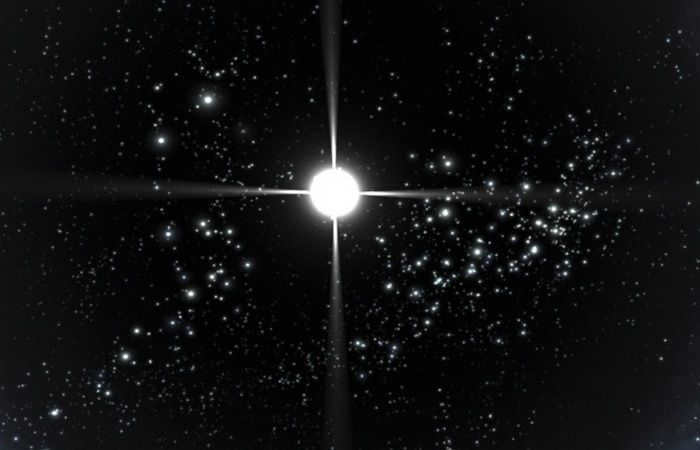
As we are aware, a star has the ability to “implode” into various forms at the end of its lifespan, such as a black hole, a white dwarf, or a neutron star. In the case of a sufficiently dense star, it will transform into a neutron star when it collapses into a supernova. At this point, the star becomes incredibly hot and dense, and it attempts to undergo further collapse.
However, this collapse is prevented by fermions, specifically neutrons, which adhere to the Pauli exclusion principle. The principle dictates that neutrons cannot be compressed into the same quantum state, causing them to be repelled by the collapsing matter. This repulsion maintains a balance within the stellar matter in its current state. For many years, astronomers have operated under the assumption that a neutron star would remain in this state of equilibrium.
However, as quantum theory has advanced, astrophysicists have posed the idea of a potential new form of star that arises when the degenerate pressure of the neutron core ceases. This unique star is known as a quark star. As the mass of the star increases, the neutrons within it will break down into their constituent parts – quarks. These quarks, under intense pressure and a vast amount of energy, can exist freely. This substance, referred to as “strange matter,” would possess an astonishing density, far surpassing that of a typical neutron star.
2. Electroweak Stars
Electrically charged celestial bodies with a unique combination of electromagnetic and weak forces are known as electroweak stars. These stars are formed in the aftermath of a supernova explosion, when the core of a massive star collapses under its own gravity. The electroweak stars are composed of a dense mixture of protons, neutrons, and electrons, which are held together by the electromagnetic force. Additionally, the weak force, responsible for radioactive decay and neutrino interactions, also plays a crucial role in the structure and stability of these stars.
The electroweak stars are fascinating objects because they represent a unique phase of stellar evolution. At their core, temperatures and densities are so high that the electromagnetic and weak forces become indistinguishable, merging into a single electroweak force. This force is responsible for the balance between gravitational collapse and nuclear reactions in the star, allowing it to maintain its equilibrium.
One of the key features of electroweak stars is their ability to produce neutrinos through the process of electroweak capture. Neutrinos, which are nearly massless particles with no electric charge, are produced in the dense core of the star and escape into space, carrying away energy and helping to maintain the star’s stability. This process also influences the overall evolution of the star, affecting its luminosity and lifetime.
The study of electroweak stars is important for understanding the behavior of matter under extreme conditions and the fundamental forces that govern the universe. These stars provide a unique laboratory for testing the predictions of particle physics theories and can potentially reveal new insights into the nature of matter and the universe as a whole.
In conclusion, electroweak stars are fascinating celestial bodies formed from the collapse of massive stars. They represent a unique phase of stellar evolution where the electromagnetic and weak forces merge into a single electroweak force. The study of these stars offers valuable insights into the fundamental forces and behavior of matter in extreme conditions.
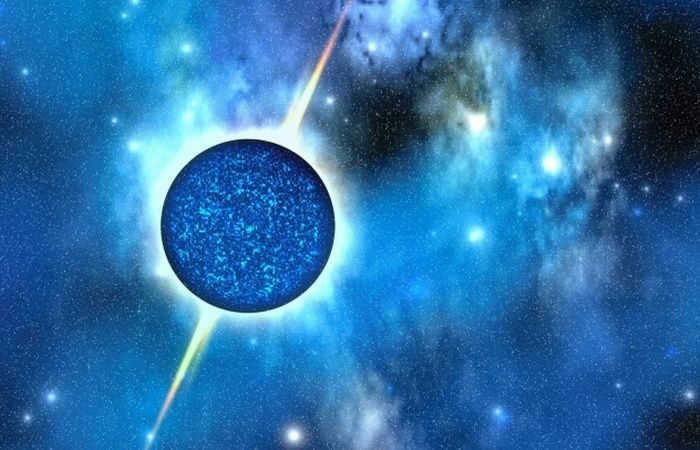
Quark stars are traditionally thought to be the final phase of a star’s life before it collapses into a black hole. However, physicists have recently proposed the existence of an alternative type of star that could exist between a quark star and a black hole. This hypothetical star, known as an electroweak star, is believed to maintain a delicate equilibrium through intricate interactions between the weak nuclear force and the electromagnetic force, collectively known as the electroweak force.
In an electroweak star, the mass of the star would create pressure in its core, causing the formation of “strange matter.” As the pressure increases, the electromagnetic and weak nuclear forces would merge, becoming indistinguishable. At this point, the quarks in the nucleus would start to transform into leptons like electrons and neutrinos. In actuality, a majority of the “strange” matter would turn into neutrinos, and the resulting energy would halt the star’s collapse.
3- Thorne-Zhitkova objects
In 1977, Kip Thorne and Anna Zhitkova released a publication documenting a revolutionary celestial phenomenon known as the Thorne-Zhitkova Object. This extraordinary entity is classified as a hybrid star, emerging from the cataclysmic encounter between a red supergiant and a compact and dense neutron star. Given the immense size of the red supergiant, it would require hundreds of years for the neutron star to traverse its inner atmosphere.
As the neutron star plunges into the red supergiant, the barycenter (the point around which the two stars revolve) gradually shifts towards the core of the supergiant. Eventually, the two stars will merge, precipitating a colossal supernova event that ultimately leads to the formation of a black hole.
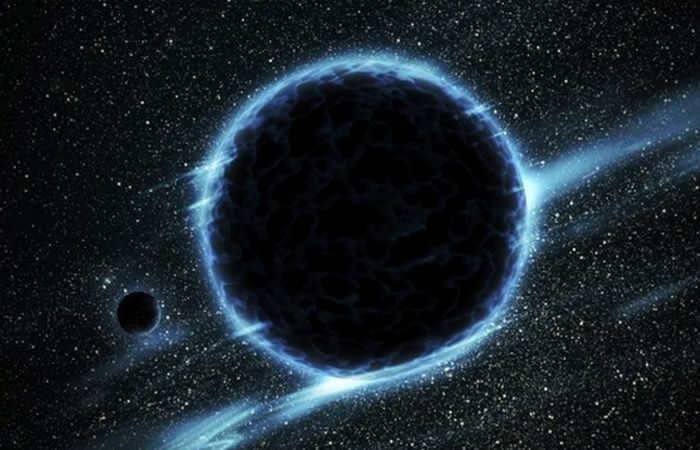
A typical star undergoes nuclear fusion, where hydrogen atoms combine to form helium, releasing a tremendous amount of energy. This energy, along with the pressure generated, allows the star to sustain itself. However, the hydrogen fuel is finite, and as it depletes, the star enters a new phase where it starts burning heavier elements. Unfortunately, the energy produced from burning these heavier elements is not as abundant as that from hydrogen, causing the star to gradually cool down. Eventually, the star reaches a point where it goes supernova, exploding and dispersing metal molecules into the universe. These metal molecules then play a crucial role in the formation of new stars and planets.
As the Universe becomes more mature, an increasing number of stars will go through explosive events, leading to the release of a greater quantity of metal into space. Historically, stars contained minimal amounts of metal, but this is changing over time. Looking ahead, as the Universe continues to age, novel and extraordinary variations of metallic stars will emerge, such as the speculative notion of frozen stars capable of maintaining nuclear fusion even at temperatures as low as zero degrees Celsius.
5. Objects with collapsing magnetospheres that last forever
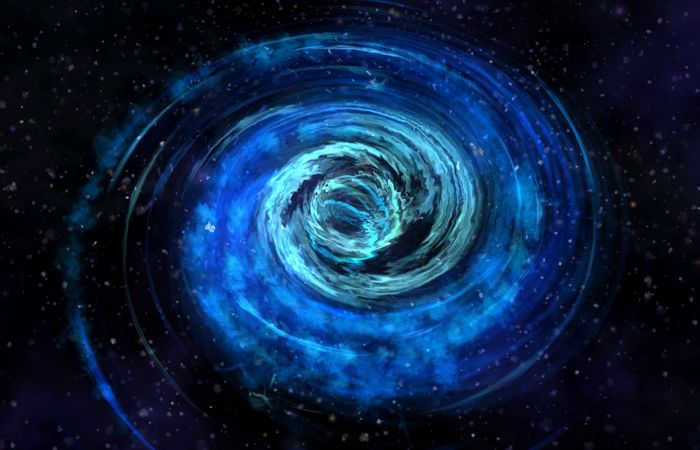
Black holes are linked to enigmatic phenomena and contradictions. Theorists have proposed the existence of various celestial bodies resembling stars. For instance, in 2003, scientists posited that black holes are not truly singularities (as previously believed), but rather exotic types of stars known as “magnetospherical eternally collapsing objects”. It is suggested that such objects can resolve the paradox in which the matter of a collapsing black hole eventually exceeds the speed of light.
6. The Birth of Population III Stars
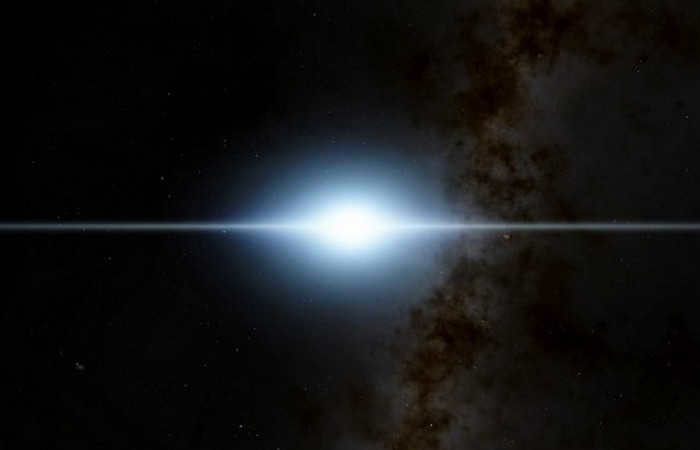
According to scientific predictions, as the universe approaches its sunset, cold metallic stars are expected to emerge. But what about the stars on the opposite end of the spectrum? These stars, composed of primary gas remnants from the Big Bang, are known as population III stars. The stellar population diagram, developed by Walter Baade in 1940, illustrated the star’s metal content. The “population” number indicated the star’s metal content, with higher numbers indicating higher metal content. For a long time, only two types of stars (logically named population I and II stars) were recognized.
Nonetheless, contemporary astrophysicists are now actively exploring the nature of the stars that would have arisen immediately following the occurrence of the Big Bang. These stars lacked heavy elements and were composed solely of hydrogen and helium, potentially with traces of lithium. The Population III stars were incredibly luminous and immense, surpassing the majority of present-day stars in size. Not only did they generate common elements in their cores, but they were also fueled by the reaction of dark matter annihilation.
The lifespan of such stars was exceedingly short, lasting only approximately two million years. Eventually, these stars consumed all of their hydrogen and helium, initiated the synthesis of heavier metallic elements, and subsequently exploded, dispersing them throughout the vast expanse of the universe.
7. Quasi-stars
Quasi-stars, also known as black hole stars, are a hypothetical type of star that could exist in the early universe. These stars would form from the collapse of a supermassive black hole, and would be incredibly bright and hot. Quasi-stars would emit vast amounts of radiation and would be much larger than normal stars. They would also have a very short lifespan, burning through their fuel quickly.
Quasi-stars are called black hole stars because they would have a black hole at their core. The intense gravity of the black hole would cause matter to fall into it, releasing large amounts of energy in the process. This energy would power the star, making it shine brightly. However, the black hole would also be continuously growing, eventually consuming the entire star.
Quasi-stars are still a theoretical concept and have not been observed in the universe. However, scientists believe that they may have existed in the early universe, when conditions were different. The study of quasi-stars could provide valuable insights into the formation and evolution of galaxies and black holes.
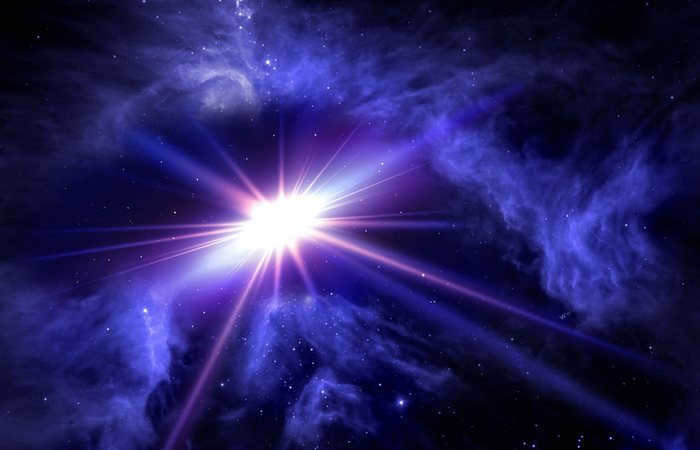
Quasi-stars are distinct from quasars (a celestial body resembling a star but not classified as a true star). Quasi-stars are a hypothetical category of stars that could have only existed in the early stages of the cosmos. Comparable to Thorne-Zhitkova objects, they would have exhibited “cannibalistic” behavior, with a black hole at their core rather than another star. Quasi-stars are thought to have originated from the formation of population III stars on a massive scale.
When regular stars collapse, they transform into supernovae and leave behind a black hole. In a quasi-star, the dense outer layer of nuclear material must absorb the energy of the explosion caused by the collapse, which cannot escape beyond the supernova. As a result, the outer shell of the star remains intact, while a black hole forms within it. The balance of the quasi-star’s existence is maintained by the interplay between the energy emitted from the core of the black hole and the energy of gravitational collapse.
8. Preon stars
Preon stars are a theoretical type of celestial object composed of preons, which are hypothetical subatomic particles. Preons are considered to be the building blocks of quarks and leptons, which are the elementary particles that make up protons, neutrons, and electrons.
According to the preon star hypothesis, these hypothetical particles can form a dense core within a star, resulting in the formation of a preon star. The gravitational collapse of a massive star can lead to the creation of such a dense core, where preons are tightly packed together.
The existence of preon stars is currently purely theoretical, as there is no direct observational evidence to support their existence. However, they are an interesting concept in the field of theoretical physics and could potentially provide insights into the fundamental nature of matter and the universe.
Further research and observational evidence are needed to determine the validity of the preon star hypothesis and to explore the potential implications of their existence. Until then, preon stars remain an intriguing topic for scientific exploration and speculation.

For centuries, philosophers have engaged in a debate regarding the fundamental unit of matter. Initially, scientists believed that protons, neutrons, and electrons were the building blocks of the Universe. However, as scientific knowledge advanced, smaller particles were discovered, leading to a reconsideration of our understanding of the cosmos.
In theory, fission could continue indefinitely, but some theorists propose that the smallest particles in nature are known as preons. These preons, if they exist, would form preon stars with dimensions ranging from the size of a pea to a soccer ball. Despite their minuscule volume, these preon stars would possess a mass comparable to that of the moon. The existence of preon stars could potentially shed light on the mysterious dark matter that permeates the universe.
9. Planck stars
Planck stars are a theoretical concept in physics that suggests the existence of stars formed from the remnants of a black hole. The idea behind Planck stars is that when a black hole reaches the Planck scale, which is the smallest unit of length in the universe, it undergoes a quantum bounce instead of collapsing into a singularity. This quantum bounce results in the formation of a new star, known as a Planck star.
The concept of Planck stars was first proposed by physicist Carlo Rovelli in 2014. Rovelli suggested that instead of a black hole singularity, which is a point of infinite density and infinite curvature, the collapse of a black hole could be stopped by quantum gravity effects at the Planck scale. This would prevent the formation of a singularity and instead result in the formation of a Planck star.
Planck stars are thought to have a number of interesting properties. For example, they are expected to have a minimum size, determined by the Planck length, which is about 1.6 x 10^-35 meters. They are also thought to be highly compact and have a high mass-to-size ratio. Additionally, Planck stars are believed to emit Hawking radiation, which is a form of radiation predicted by physicist Stephen Hawking.
The existence of Planck stars has not yet been confirmed by observational evidence, and they remain a theoretical concept. However, if they do exist, they could have important implications for our understanding of the nature of black holes and the behavior of matter at extremely high densities. Further research and observations are needed to determine whether Planck stars are a real phenomenon or simply a fascinating idea in theoretical physics.
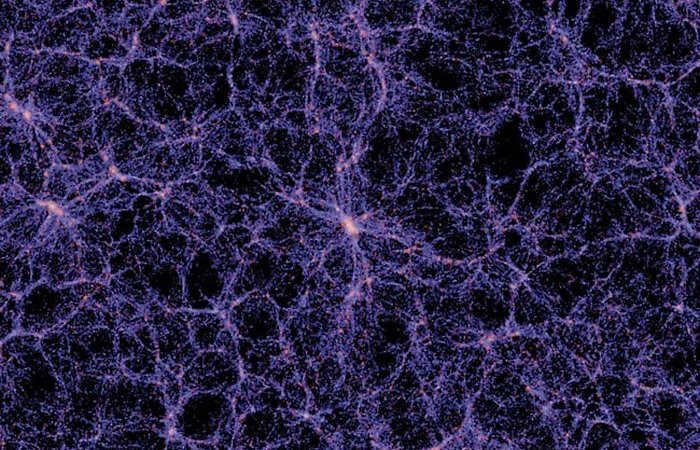
An intriguing inquiry about black holes is their appearance from within. Frequently, the core of a black hole is characterized as a singularity with boundless density and lacking spatial dimensions. However, what does this truly signify? Present-day theorists propose the existence of Planck stars at the heart of black holes. Reportedly, a Planck star is an exceedingly peculiar phenomenon sustained by conventional nuclear fusion. It acquired its name due to the necessity of possessing an energy density approximating the Planck density (i.e. – 5.15 x 10^96 kilograms per cubic meter).
10. Fuzzy sphere
